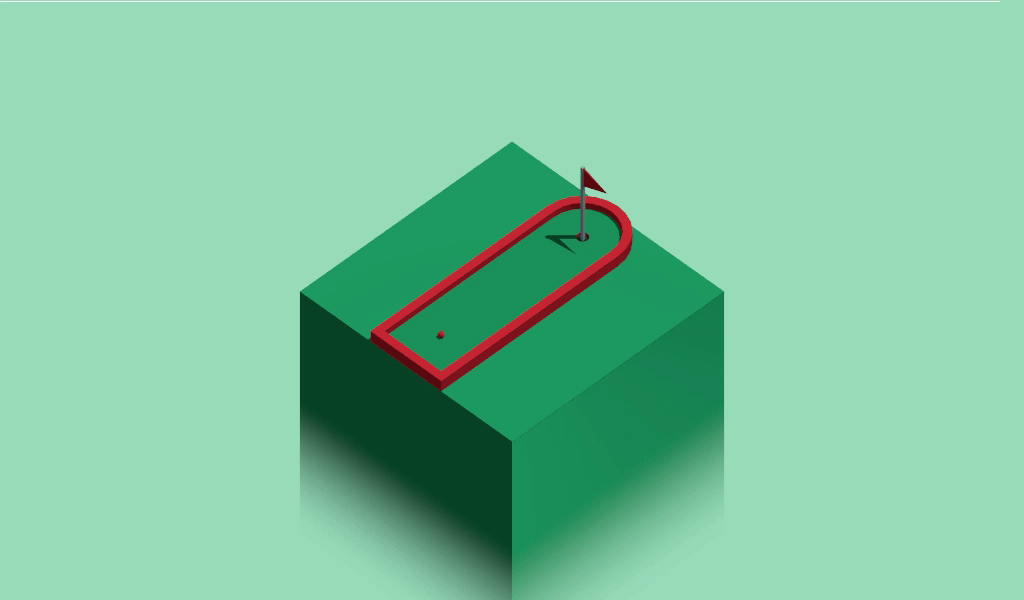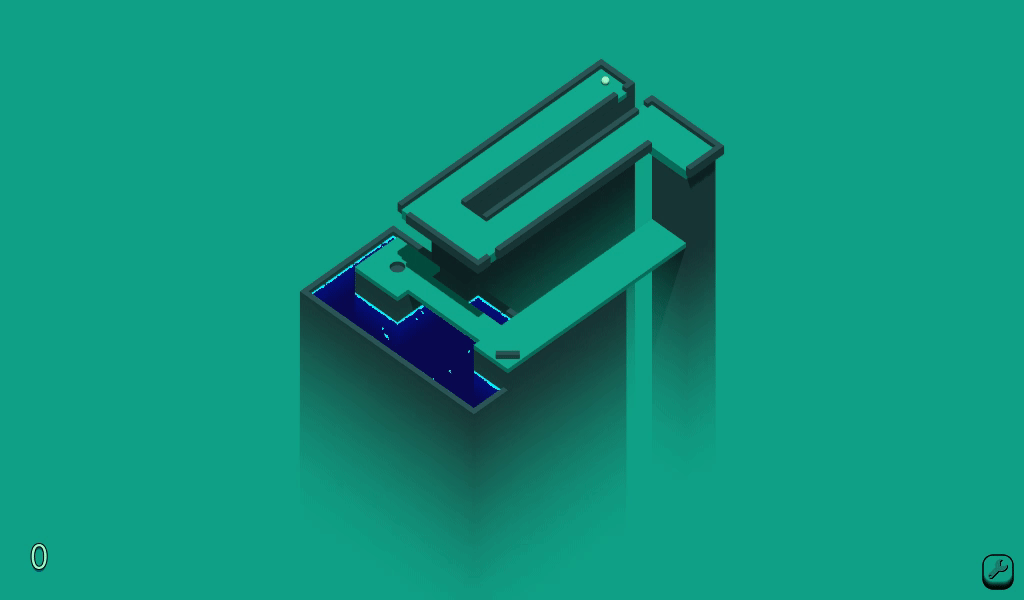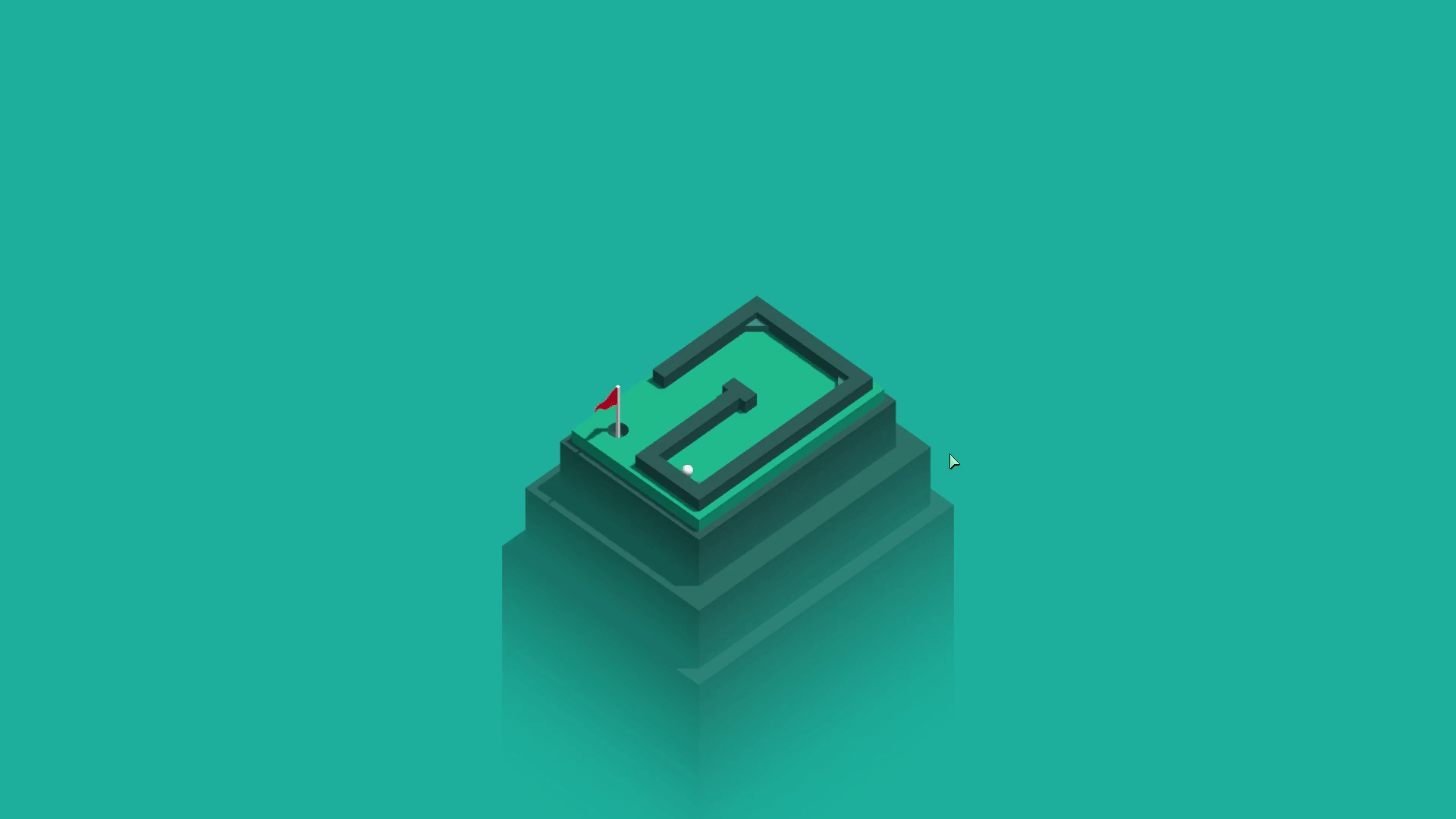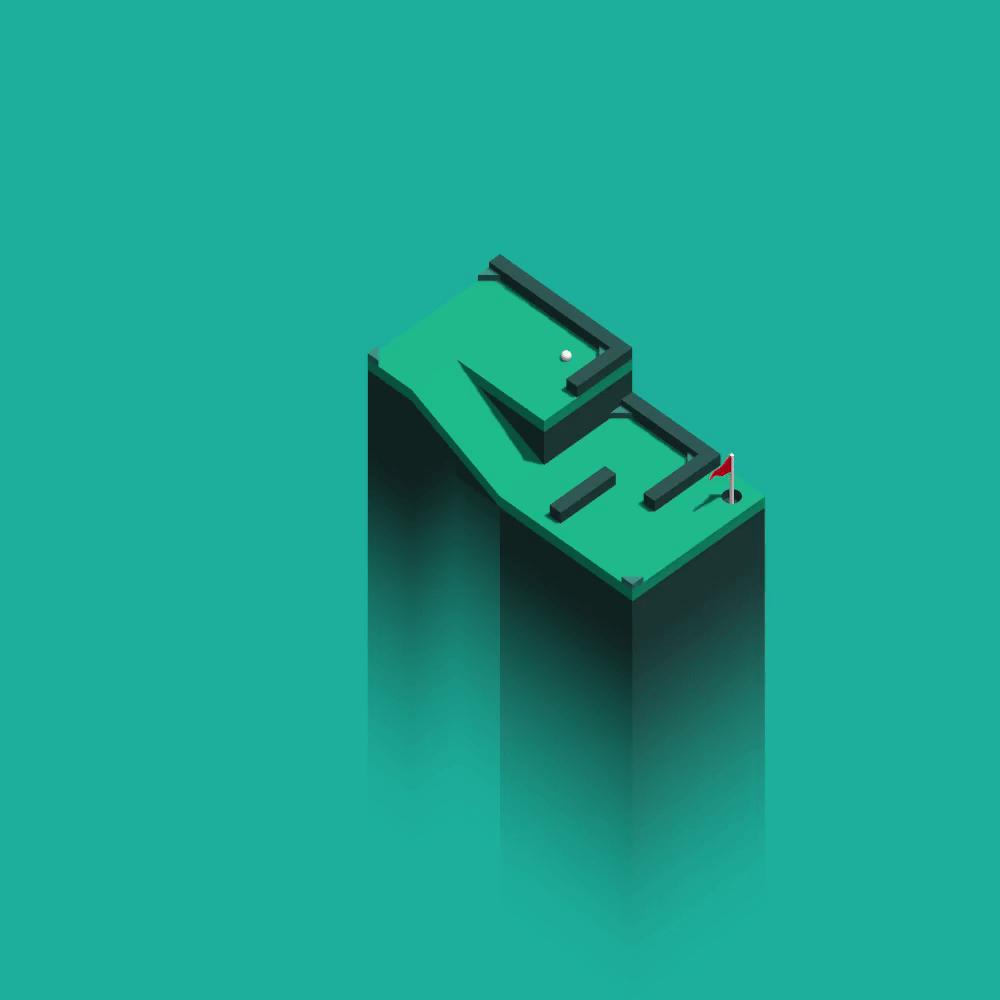Starting Isoputt
I began working on Isoputt in December 2019 when I was inspired by KennyNL’s Minigolf asset pack. I thought that I could use these tiles to make a simple game in a week. I placed some of Kenny’s tiles into the godot editor, and started trying to get the ball physics right. I started with a simple rigid body sphere. 5 months later and I’m still working on the same project.

My initial physics-prototyping level.
Turns out designing compelling content is hard.
The experience of making this game has changed my outlook on game dev completely. I now view level creation as the primary mode of game development; where systems and implementations merely serve as a scaffold upon which to build artistry. Before, I was stuck in the programmer focused mindset, constantly trying to create some perfect system which would generate fun. I now see game design differently; I’m trying to create a system where a single hour of my time can generate 5 minutes of entertainment for thousands of people. That’s the equation. Thats the goal.
Turns out fun is elusive. I had many failed level designs. After making the following level, I deleted all the levels I had made with KennyNL’s tiles, and started from scratch. I had moved the bar higher, and none of my previous levels reached the threshold of quality that I now required.

After much iteration
This is what growth is. Deleting the old and starting again. After much more iteration, I began to form an effective design process. Now, I usually have a clear vision in mind before I begin. I have a notebook where I draw the simplest minigolf levels imaginable, and I slowly add complexity to the simplicity. Ideally, this allows me to fail on paper, instead of at my computer.
 Less is more
Less is more
Simplicity is the key here. Less is more. I’ve spent countless hours adding more and more things to a bad level trying to make it fun, but it feels so impossible when you have a bad foundation. The good stuff forms when I have a good basis, and then I start removing the shots that I do not want to allow players to make. Finally, I focus on esthetics, adding small details in order to spice up the look of the game.
 Details come last
Details come last
My basic formula is this: 5 shots for a beginner player, 3 for an intermediate and 2 for an expert. Once I have a level that requires approximately that amount of shots, I iterate on the look of it. I’m still developing my esthetic style. But I have lots of inspiration on twitter.
If your interested in Isoputt, please consider following me on twitter, subscribing to my email list, or donating on kofi. I’m always interested in feedback.